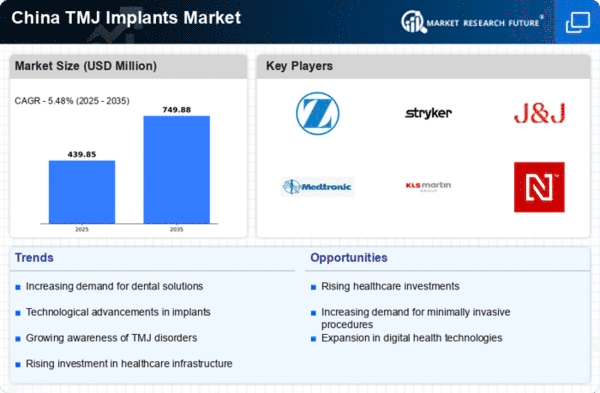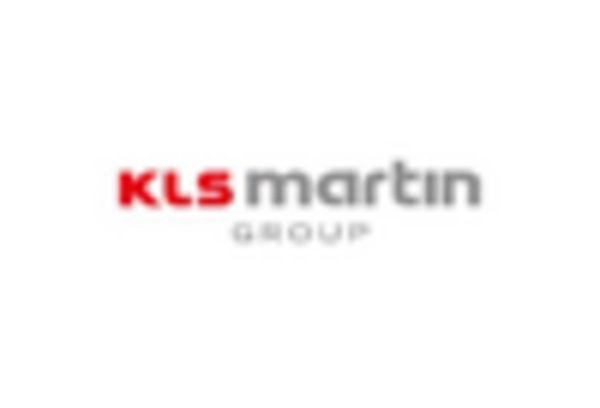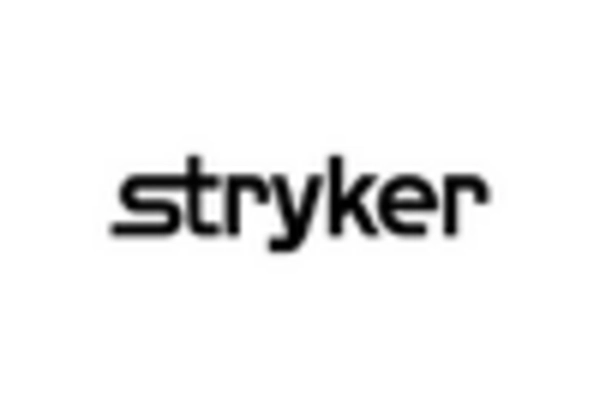Rising Incidence of TMJ Disorders
The increasing prevalence of temporomandibular joint (TMJ) disorders in China is a notable driver for the tmj implants market. Factors such as stress, poor posture, and dental issues contribute to this rise. Recent studies indicate that approximately 10-15% of the population experiences TMJ-related symptoms, leading to a growing demand for effective treatment options. As awareness of these disorders expands, patients are more likely to seek surgical interventions, including implants. This trend is expected to propel the market forward, as healthcare providers increasingly recommend tmj implants as a viable solution for chronic pain and dysfunction. The tmj implants market is thus positioned to benefit from this rising incidence, with potential growth opportunities in both urban and rural healthcare settings.
Advancements in Implant Technology
Technological innovations in implant design and materials are significantly influencing the tmj implants market. Recent advancements have led to the development of more biocompatible materials and improved surgical techniques, enhancing patient outcomes. For instance, the introduction of 3D printing technology allows for customized implants tailored to individual anatomical needs, which may improve the success rates of surgeries. Furthermore, minimally invasive procedures are becoming more prevalent, reducing recovery times and hospital stays. As these technologies continue to evolve, they are likely to attract more patients seeking effective solutions for TMJ disorders. The tmj implants market is thus poised for growth, driven by these advancements that enhance both the safety and efficacy of treatments.
Increased Focus on Aesthetic Dentistry
The rising emphasis on aesthetic dentistry in China is influencing the tmj implants market. Patients are increasingly seeking treatments that not only alleviate pain but also enhance their facial aesthetics. This trend is particularly evident among younger demographics who prioritize both functionality and appearance. As dental professionals incorporate aesthetic considerations into their treatment plans, the demand for tmj implants that offer both therapeutic and cosmetic benefits is likely to grow. The tmj implants market is thus adapting to this shift, with manufacturers developing implants that align with aesthetic preferences. This dual focus on health and beauty may drive market expansion as more patients opt for comprehensive solutions to their TMJ issues.
Enhanced Training for Dental Professionals
The improvement in training programs for dental professionals in China is a significant driver for the tmj implants market. As educational institutions enhance their curricula to include advanced techniques in TMJ disorder management, more practitioners are becoming proficient in performing implant surgeries. This increased expertise is likely to boost patient confidence in seeking surgical interventions for TMJ disorders. Furthermore, workshops and seminars focusing on the latest advancements in implant technology are becoming more common, fostering a culture of continuous learning among dental professionals. As the skill level of practitioners rises, the tmj implants market is expected to experience growth, as more patients are referred for surgical options by knowledgeable providers.
Growing Investment in Healthcare Infrastructure
China's ongoing investment in healthcare infrastructure is a critical driver for the tmj implants market. The government has been increasing funding for healthcare facilities, particularly in underserved areas, which enhances access to specialized treatments. This investment includes the establishment of advanced dental clinics equipped with the latest technology for TMJ disorder management. As more facilities become available, the capacity to perform tmj implant surgeries is expected to rise, catering to a larger patient base. Additionally, the focus on improving healthcare quality aligns with the growing demand for effective TMJ treatments. Consequently, the tmj implants market stands to benefit from this enhanced infrastructure, which may lead to increased adoption of implant procedures across the country.

















Leave a Comment